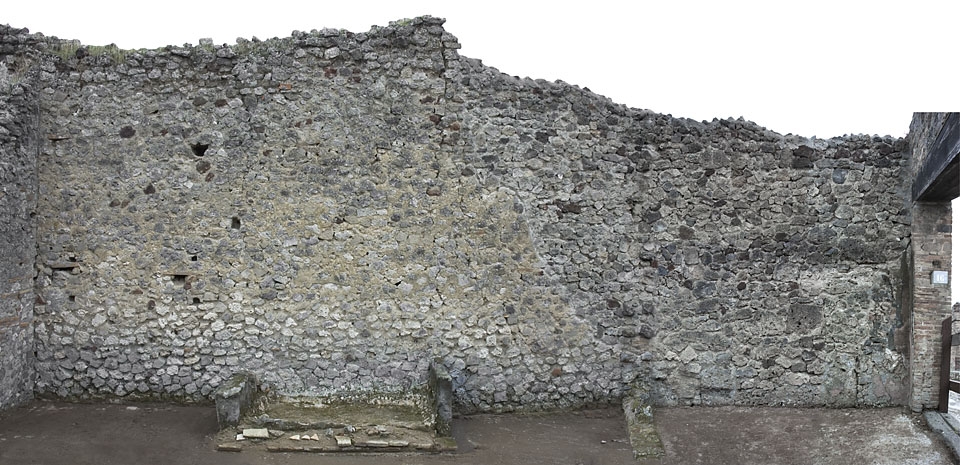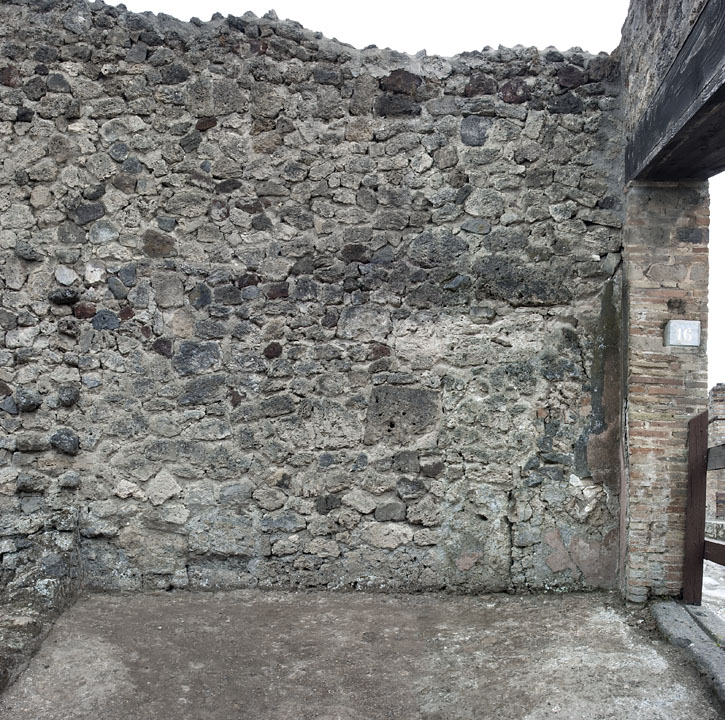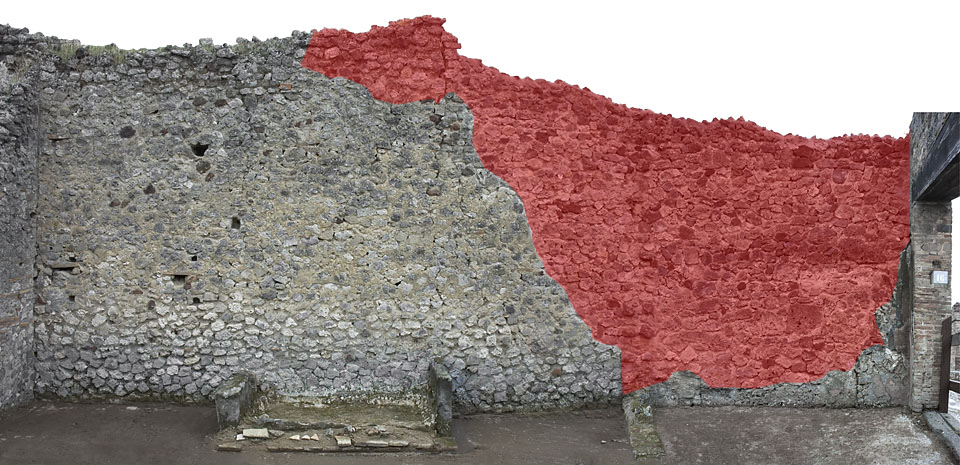South Wall
Description
Henrik Boman & Monika Nilsson
The S wall constitutes the south boundary of the whole building V 1,14-16 and it runs continuously from the front, next to Via Vesuvio, to the rear of the bakery, through rooms 16h, b, f and i.
In room 16h and in the atrium a there is a clearly visible line in the mortar where the wall presumably has been re-erected. On the other side of the wall, in V 1,17, there is a sign stating ’restauro 1975’, giving us a date for the restoration.
Inside the westernmost part of the wall, plaster and pottery sherds are visible, corresponding to a part of the wall what must have been standing since antiquity.
In its present state, mostly limestone is used in opus incertum. A few cruma are visible, and fewer yet lava stones, none of which are in the lower part of the wall. A number of larger blocks are used in the western part of the wall; their original position, however, cannot be deduced since the wall is restored. Some pottery sherds, used for attaching the plaster layers to the wall, indicate that that particular part of the wall is ancient.
Plaster
In the SE corner, a visible layer of plaster continues behind the remains of the E wall. The colour is no longer traceable, but in the SW corner, plaster with red pigment and yellow bands is preserved. The ground colour on the wall was presumably red to a height of 1.5 m and above that white.
Plaster
In the SW corner, the plaster is preserved around the corner to the W wall. The colour is red with areas of a faded yellow paint. Red pigment is observable up to a height of c. 1.5 m above the floor, where the colour changes to grey (originally white/light?). Yellow decoration is visible above the red and grey plaster, and the decoration continues on the S wall.
Several layers of plaster is visible behind the E wall in the SE corner (6D 1-3, 13). A red plaster covers the corner, but a grey (UP) plaster is visible on the S wall, on the area where the E wall abuts to the S wall. Yet another red plaster is visible behind this grey UP plaster, and this red plaster is interpreted as the UP layer at the S wall in the atrium.
There seems to be two layers of type A plaster (6D 1-2), one Type C (6D 3) and one Type H (6D 13) in this corner. The type A seems to continue behind the E wall of room h (V 1,16), the type H on the other hand goes around the SE corner.
Type A plaster is found in the SE corner but also at the centre of the wall (6D 4) and at a higher level (6D 5). The last example might very well be a spoil, if we follow our argument about the modern reconstruction of this wall. The type H is associated with the red and grey layer in the SW corner, i.e. the last decoration phase of the room.



